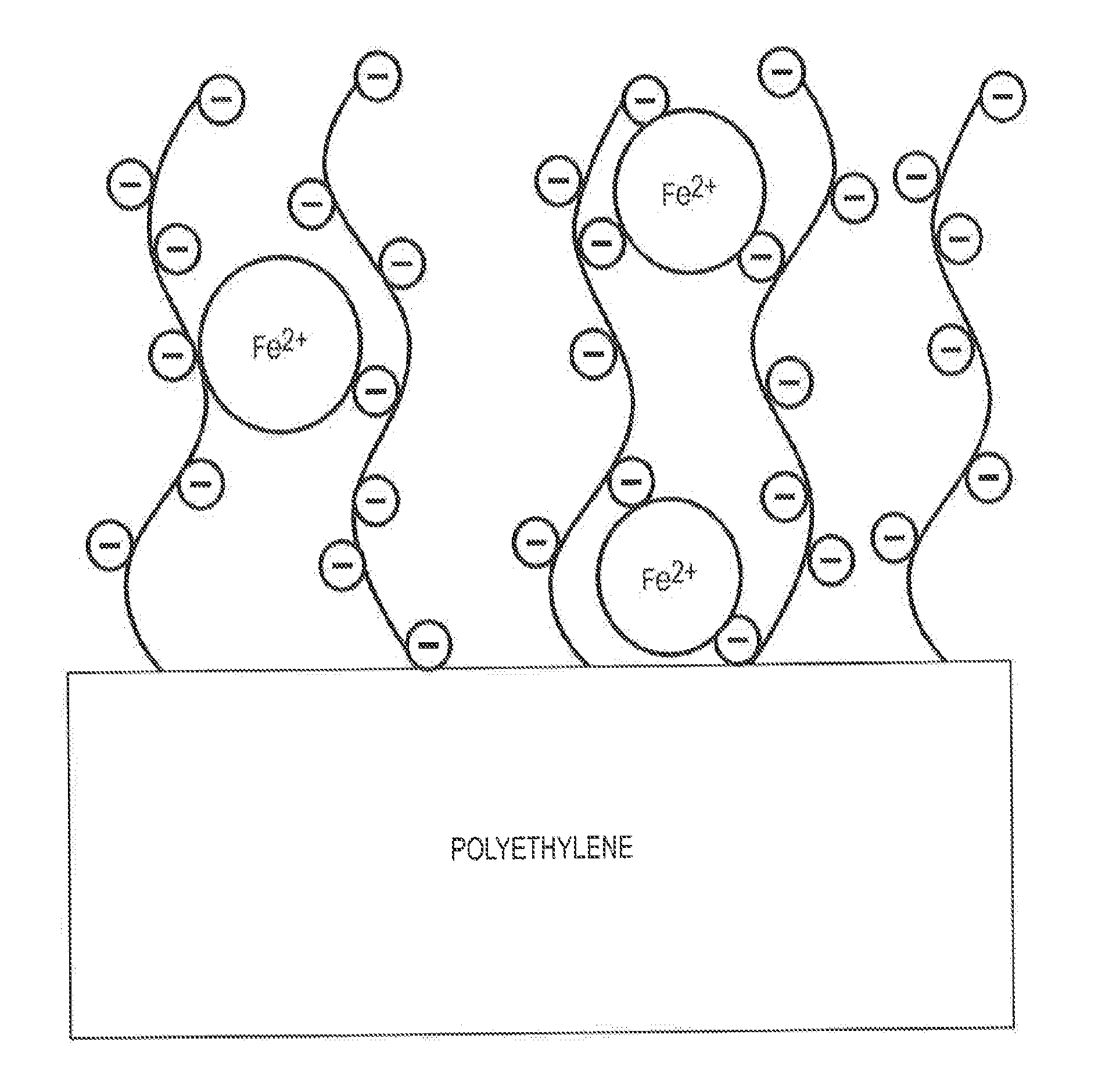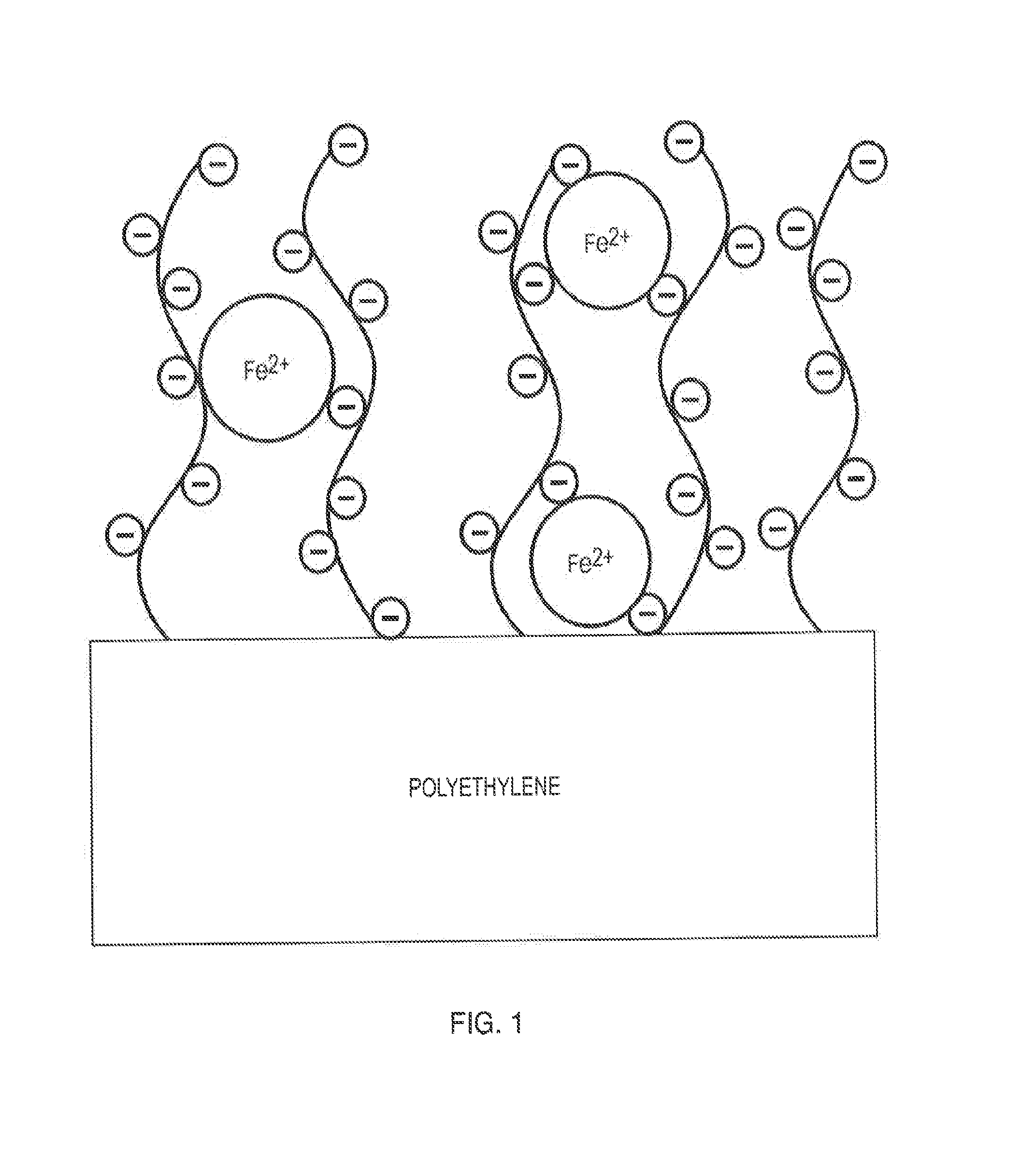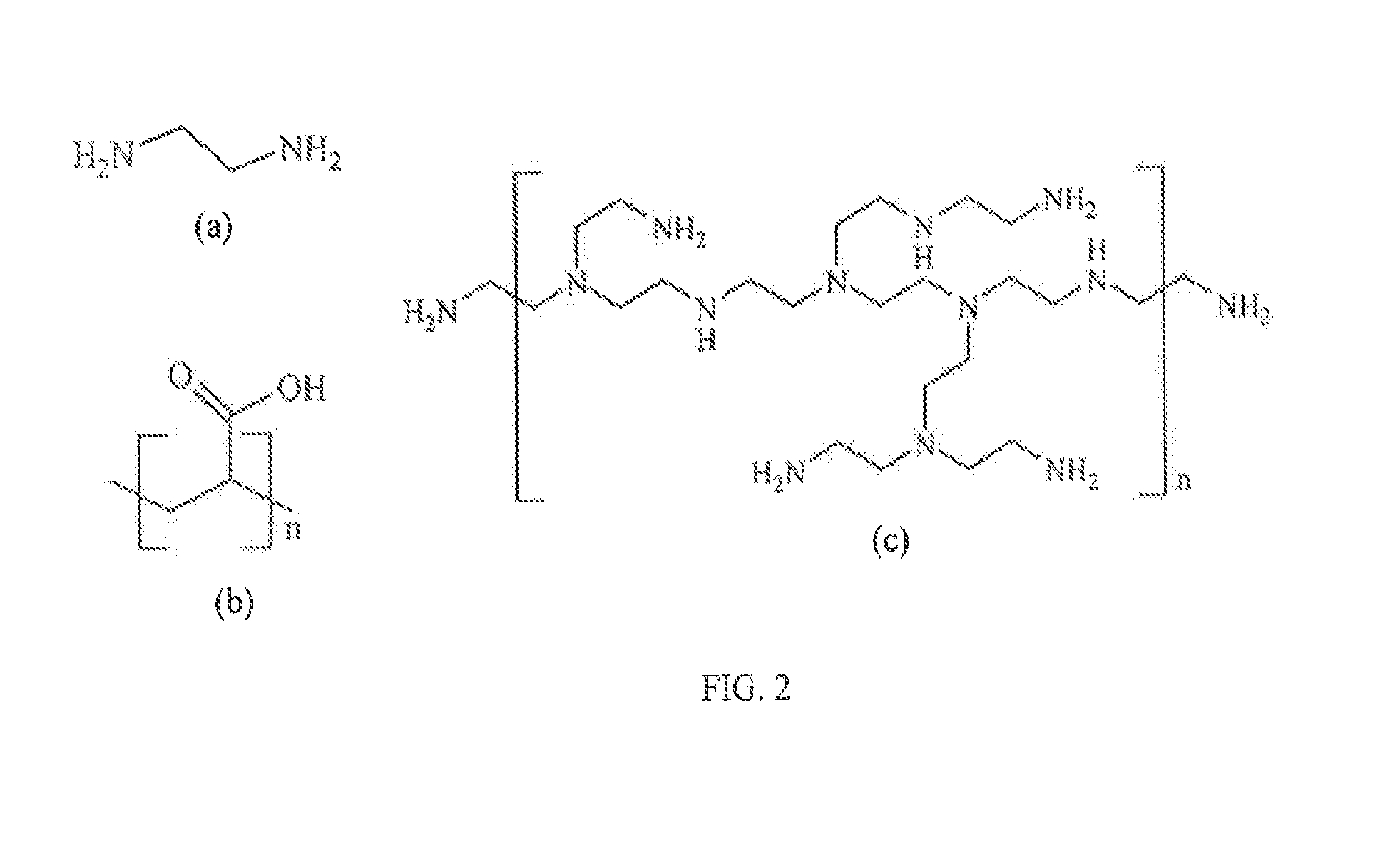Ion sequestering active packaging materials
a technology of active packaging and sequestration, which is applied in the direction of packaging foodstuffs, packaged goods, pharmaceutical containers, etc., can solve the problems of shortened shelf life, color intensity loss, unpleasant flavor and odor generation, etc., and achieve the effect of inhibiting color loss and reducing the loss of nutrients
- Summary
- Abstract
- Description
- Claims
- Application Information
AI Technical Summary
Benefits of technology
Problems solved by technology
Method used
Image
Examples
example 1
[0073]Materials
[0074]Low-density polyethylene (PE, pellets) and poly(acrylic acid) (PAA, Mw=450,000) were purchased from Scientific Polymer Products (Ontario, N.Y.); 1-ethyl-3-(3-dimethylaminopropyl)carbodiimide hydrochloride (EDC) was purchased from ProteoChem (Denver, Colo.); N-hydoxysuccinimide (NHS), hydroxylamine hydrochloride, ferrous sulfate heptahydrate (99+%), imidazole (99%), and 3-(2-pyrinyl)-5,6-diphenyl-1,2,4-triazine-p,p′-disulfonic acid disodium salt hydrate (ferrozine, 98+%) were purchased from Acros Organics (Morris Plains, N.J.); polyethylenimine (PEI, branched, Mw 25,000, Mn 10,000) was purchased from Sigma-Aldrich (St. Louis, Mo.); ethylenediamine (70%) was purchased from Ricca Chemical Company (Arlington, Tex.); toluidine blue O (TBO) was purchased from MP Biomedicals (Solon, Ohio); isopropanol, acetone, sodium carbonate, sodium bicarbonate, sodium acetate trihydrate, 4-(2-hyddroxyethyl)-1-piperazineethane-sulfonic acid (HEPES), hydrochloric acid, trichloroaceti...
PUM
| Property | Measurement | Unit |
|---|---|---|
| Color | aaaaa | aaaaa |
| Magnetism | aaaaa | aaaaa |
Abstract
Description
Claims
Application Information
 Login to View More
Login to View More - R&D
- Intellectual Property
- Life Sciences
- Materials
- Tech Scout
- Unparalleled Data Quality
- Higher Quality Content
- 60% Fewer Hallucinations
Browse by: Latest US Patents, China's latest patents, Technical Efficacy Thesaurus, Application Domain, Technology Topic, Popular Technical Reports.
© 2025 PatSnap. All rights reserved.Legal|Privacy policy|Modern Slavery Act Transparency Statement|Sitemap|About US| Contact US: help@patsnap.com



